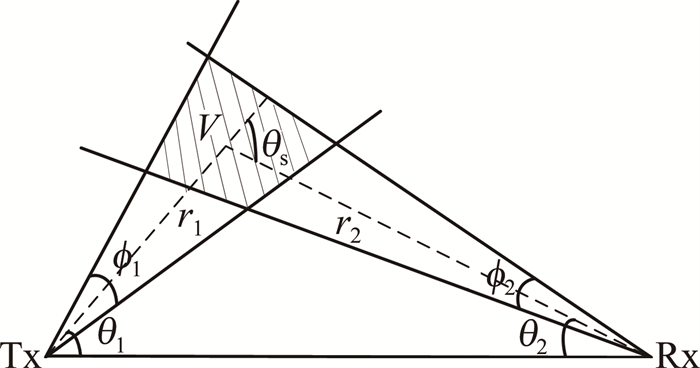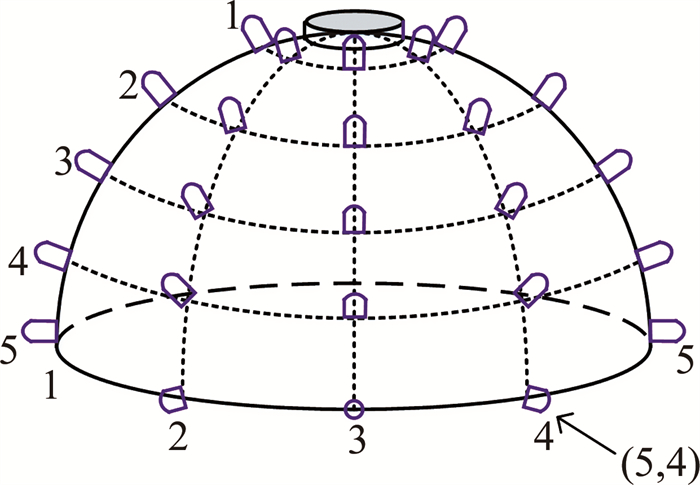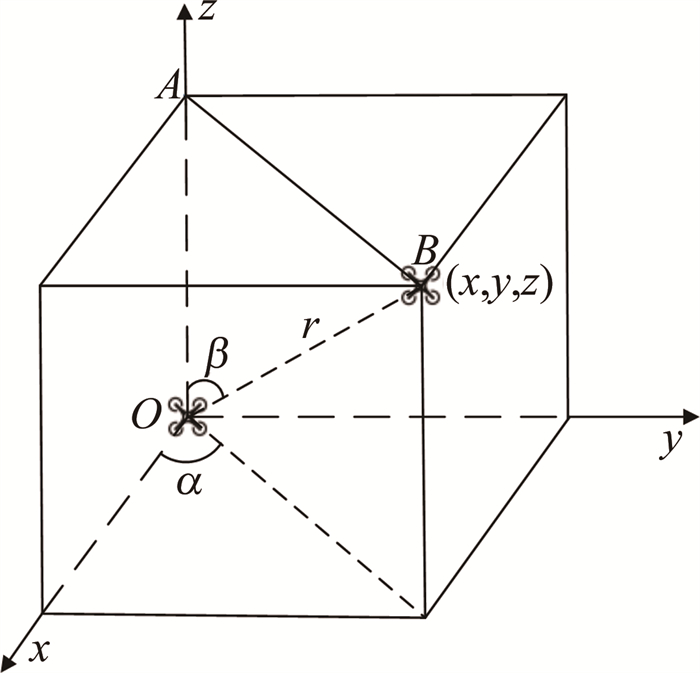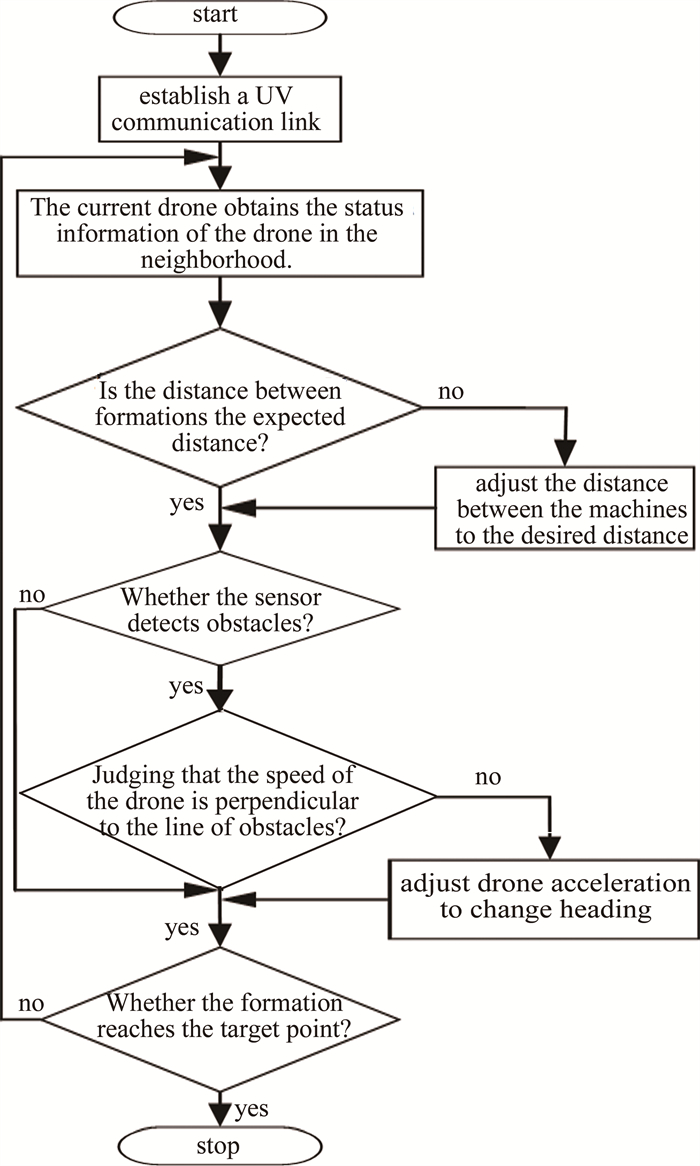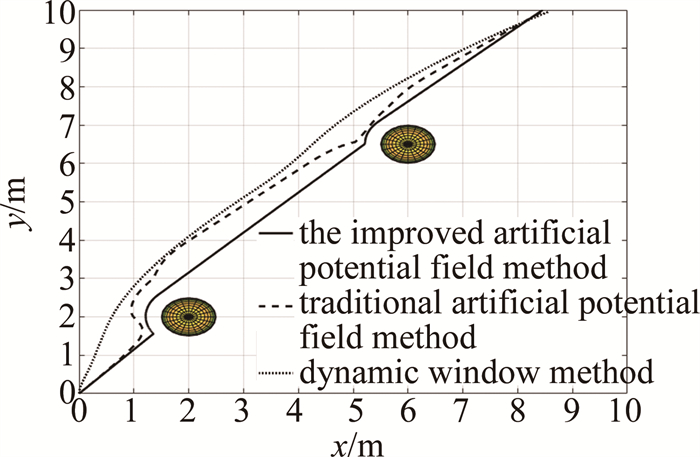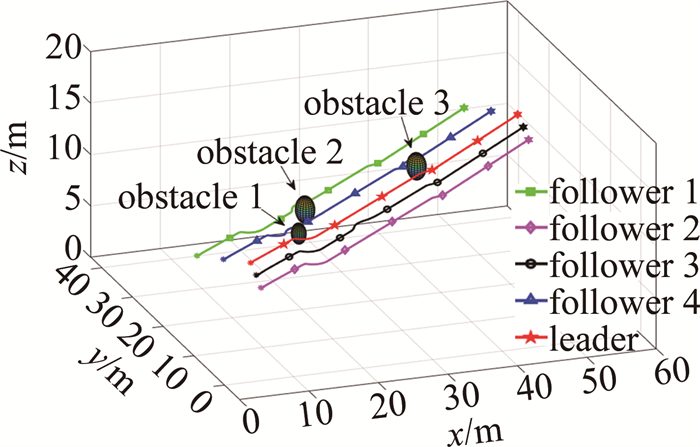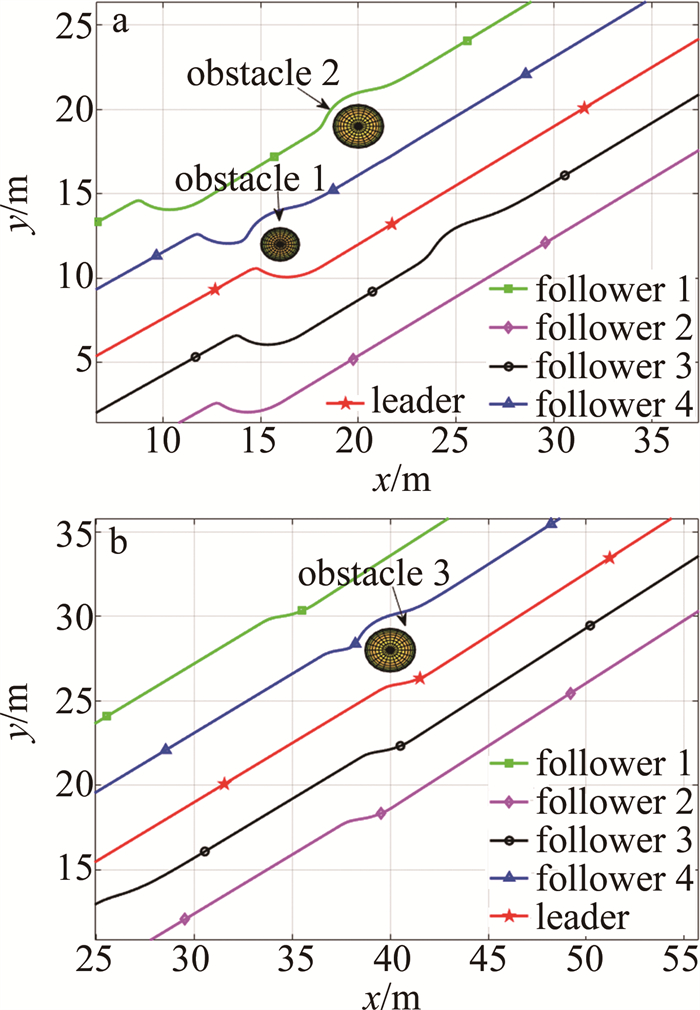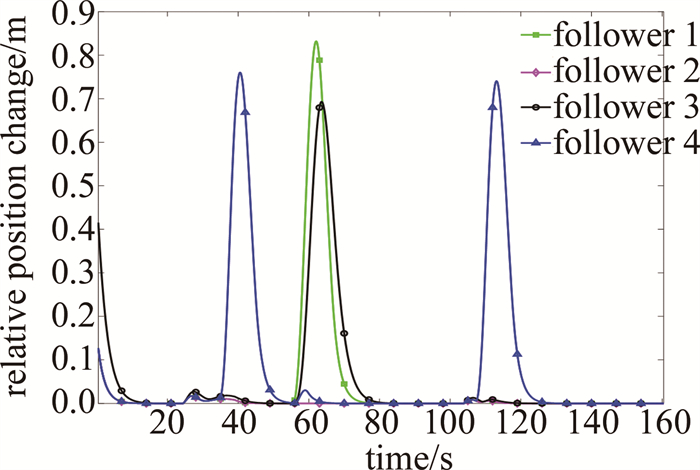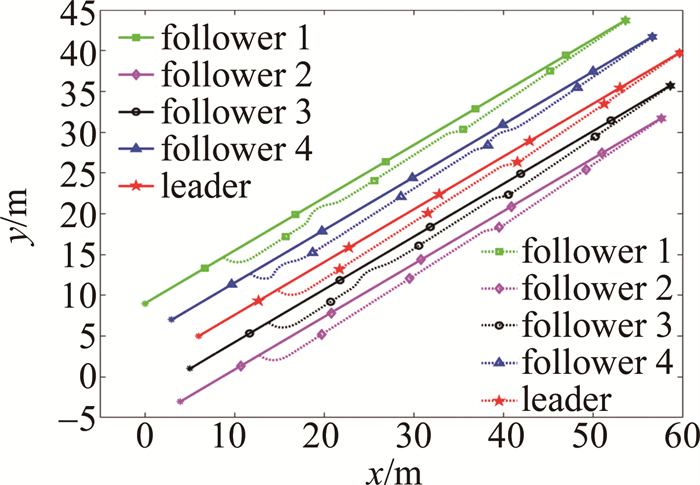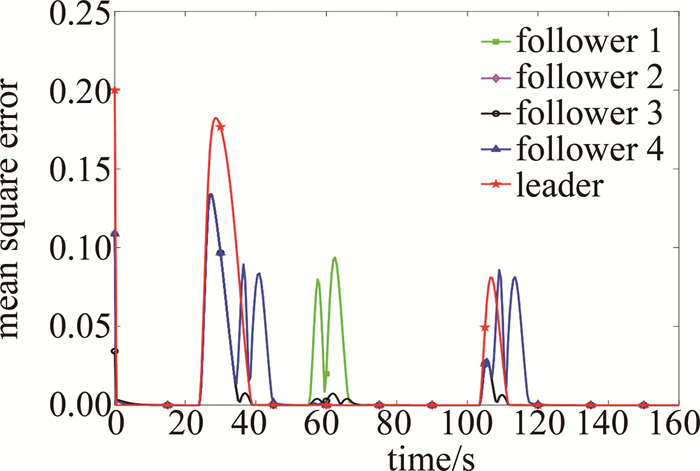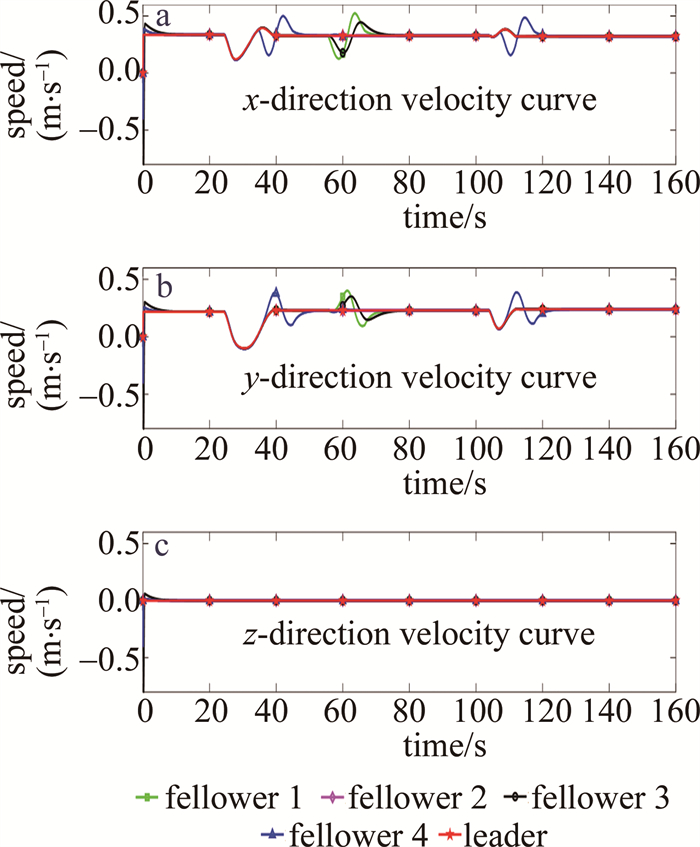Control method for anti-collision formation of UAVs in cooperation with ultraviolet communication
-
摘要: 为了研究强电磁干扰环境下无人机防撞编队的避障控制效果, 采用无人机编队间紫外光通信模型, 对传统人工势场法进行改进, 给出了具体无人机编队机间和无人机与障碍物的势场函数, 实现无人机编队在飞行的同时可以进行局部避障。结果表明, 在相同条件下, 改进后的人工势场法比传统人工势场法的避障时间减少了7.38%, 避障总路径减少了5.8%, 将改进后的避障算法应用到编队中可实现无人机编队的机间避障与外部障碍物的规避, 且编队间能够保持固定队形飞行至目标点。这一结果对强电磁干扰环境下无人机编队避障的研究有一定的应用价值。Abstract: In order to study the obstacle avoidance control effect of unmanned aerial vehicle (UAV) anti-collision formation in the environment of strong electromagnetic interference, the ultraviolet light communication model between UAV formations was adopted, and the traditional artificial potential field method was improved. The potential field function of the UAV and the obstacle was established, with which the local obstacle avoidance while the UAV formation was flying was realized. The results show that with the improved artificial potential field method, the obstacle avoidance time reduces by 7.38% and the total obstacle avoidance path reduces by 5.8% compared with the traditional artificial potential field method under the same conditions. The improved obstacle avoidance algorithm is applied to the formation. It can realize the obstacle avoidance between the drones and the avoidance of external obstacles, the formation can maintain a fixed formation to fly to the target point. This result has certain application value for the research of UAV formation obstacle avoidance in strong electromagnetic interference environment.
-
-
表 1 编队初始仿真参数
Table 1 Initial simulation parameters of formation
drone spatial location qi/m speed vi/(m·s-1) pitch angle ωi/(°) yaw angle φi/(°) UAV1 [0, 9, 10]T 0 0 0 UAV2 [4, -3, 10]T 0 0 45 UAV3 [5, 1, 10]T 0 0 -45 UAV4 [3, 7, 10]T 0 0 90 UAV5 [6, 5, 10]T 0 0 0 表 2 障碍物参数信息
Table 2 Obstacle parameter information
obstacle spatial location qo/m radius/m minimum range ‖qi, o‖min/m maximum range ‖qi, o‖max/m 1 [16, 12, 10]T 1 2 10 2 [20, 19, 10]T 1.3 2.6 13 3 [40, 28, 10]T 1.3 2.6 13 -
[1] ZHANG S, ZHANG H, DI B, et al. Cellular UAV-to-X communications: Design and optimization for multi-UAV networks[J]. IEEE Transactions on Wireless Communications, 2019, 18(2): 1346-1359. DOI: 10.1109/TWC.2019.2892131
[2] CIRILLO F, GÓMEZ D, DIEZ L, et al. Smart city IoT services creation through large scale collaboration[J]. IEEE Internet of Things Journal, 2020, 7(6): 5267-5275. DOI: 10.1109/JIOT.2020.2978770
[3] ALLADI T, BANSAL G, CHAMOLA V, et al. Secauthuav: A novel authentication scheme for uav-ground station and UAV-UAV communication[J]. IEEE Transactions on Vehicular Technology, 2020, 69(12): 15068-15077. DOI: 10.1109/TVT.2020.3033060
[4] WEN J, ZHAO G, HUANG S, et al. UAV three-dimensional formation keeping controller design[C]//2019 Chinese Automation Congress (CAC). New York, USA: IEEE, 2019: 4603-4608.
[5] 徐博, 张大龙. 基于量子行为鸽群优化的无人机紧密编队控制[J]. 航空学报, 2020, 41(8): 313-324. https://www.cnki.com.cn/Article/CJFDTOTAL-HKXB202008029.htm XU B, ZHANG D L. Tight formation flight control of UAVS based on pigeon inspired algorithm optimization by quantum behavior[J]. Acta Aeronauticaet Astronautica Sinica, 2020, 41(8): 313-324(in Chinese). https://www.cnki.com.cn/Article/CJFDTOTAL-HKXB202008029.htm
[6] 宗群, 王丹丹, 邵士凯, 等. 多无人机协同编队飞行控制研究现状及发展[J]. 哈尔滨工业大学学报, 2017, 49(3): 1-14. https://www.cnki.com.cn/Article/CJFDTOTAL-HEBX201703001.htm ZONG Q, WANG D D, SHAO Sh K, et al. Research status and development of multi UAV coordinated formation flight control[J]. Journal of Harbin Institute of Technology, 2017, 49(3): 1-14(in Chinese). https://www.cnki.com.cn/Article/CJFDTOTAL-HEBX201703001.htm
[7] TIAN Y, ZHU X, MENG D, et al. An overall configuration planning method of continuum hyper-redundant manipulators based on improved artificial potential field method[J]. IEEE Robotics and Automation Letters, 2021, 6(3): 4867-4874. DOI: 10.1109/LRA.2021.3067310
[8] BATISTA J, SOUZA D, SILVA J, et al. Trajectory planning using artificial potential fields with metaheuristics[J]. IEEE Latin America Transactions, 2020, 18(5): 914-922. DOI: 10.1109/TLA.2020.9082920
[9] YUAN J, ZHANG S, SUN Q, et al. Laser-based intersection-aware human following with a mobile robot in indoor environments[J]. IEEE Transactions on Systems, Man, and Cybernetics: Systems, 2018, 51(1): 354-369.
[10] LIU Y, HUANG P, ZHANG F, et al. Distributed formation control using artificial potentials and neural network for constrained multiagent systems[J]. IEEE Transactions on Control Systems Technology, 2018, 28(2): 697-704.
[11] ZHANG X, DUAN H. Altitude consensus based 3D flocking control for fixed-wing unmanned aerial vehicle swarm trajectory tracking[J]. Proceedings of the Institution of Mechanical Engineers, 2016, 230(14): 2628-2638. DOI: 10.1177/0954410016629692
[12] LINDQVIST B, MANSOURI S S, AGHA-MOHAMMADI A, et al. Nonlinear MPC for collision avoidance and control of UAVs with dynamic obstacles[J]. IEEE Robotics and Automation Letters, 2020, 5(4): 6001-6008. DOI: 10.1109/LRA.2020.3010730
[13] PARK J, CHO N, LEE S. Reactive collision avoidance algorithm for UAV using bounding tube against multiple moving obstacles[J]. IEEE Access, 2020, 8: 218131-218144. DOI: 10.1109/ACCESS.2020.3042258
[14] 索文凯, 胡文刚, 班利明, 等. 基于视觉图像的四旋翼无人机飞行控制研究[J]. 激光技术, 2020, 44(4): 451-458. DOI: 10.7510/jgjs.issn.1001-3806.2020.04.010 SUO W K, HU W G, BAN L M, et al. Research on flight control of quadrotor UAV based on visual image[J]. Laser Technology, 2020, 44(4): 451-458(in Chinese). DOI: 10.7510/jgjs.issn.1001-3806.2020.04.010
[15] ZHAO T F, XIE Y, ZHANG Y. Connectivity properties for UAVs networks in wireless ultraviolet communication[J]. Photonic Network Communications, 2018, 35(3): 316-324. DOI: 10.1007/s11107-017-0753-5
[16] 陈旿, 范铭楷, 李泽宏, 等. 蜂群无人机系统的网络鲁棒性设计[J]. 系统工程与电子技术, 2019, 41(11): 2633-2640. https://www.cnki.com.cn/Article/CJFDTOTAL-XTYD201911029.htm CHEN W, FAN M K, LI Z H, et al. Design of network robustness for drone swarm system[J]. Systems Engineering and Electronics, 2019, 41(11): 2633-2640(in Chinese). https://www.cnki.com.cn/Article/CJFDTOTAL-XTYD201911029.htm
[17] LIN Y, WANG M, ZHOU X, et al. Dynamic spectrum interaction of UAV flight formation communication with priority: A deep reinforcement learning approach[J]. IEEE Transactions on Cognitive Communications and Networking, 2020, 6(3): 892-903. DOI: 10.1109/TCCN.2020.2973376
[18] 朱旭, 闫茂德, 张昌利, 等. 基于改进人工势场的无人机编队防碰撞控制方法[J]. 哈尔滨工程大学学报, 2017, 38(6): 961-968. https://www.cnki.com.cn/Article/CJFDTOTAL-HEBG201706025.htm ZHU X, YAN M D, ZHANG Ch L, et al. UAV formation collision avoidance control method based on improved artificial potential field[J]. Journal of Harbin Engineering University, 2017, 38(6): 961-968(in Chinese). https://www.cnki.com.cn/Article/CJFDTOTAL-HEBG201706025.htm
[19] WANG J, XIN M. Integrated optimal formation control of multiple unmanned aerial vehicles[J]. IEEE Transactions on Control Systems Technology, 2013, 21(5): 1731-1744. DOI: 10.1109/TCST.2012.2218815
-
期刊类型引用(5)
1. 徐一翔,吕勇. 基于生成对抗网络的轻量化图像融合算法. 北京信息科技大学学报(自然科学版). 2024(03): 84-90 .  百度学术
百度学术
2. 刘皓皎,刘力双,张明淳. 基于YOLOv5改进的红外目标检测算法. 激光技术. 2024(04): 534-541 .  本站查看
本站查看
3. 郭明全,赵景服. YOLOv5-SATC:用于遥感图像目标检测的网络. 信息与电脑(理论版). 2024(15): 18-20 .  百度学术
百度学术
4. 吕培强. 电力搭载无人机轻量化应用模式策略研究. 科技创新与应用. 2024(36): 161-164 .  百度学术
百度学术
5. 李淼,陈诺,安玮,李博扬,凌强,李卫星. 面向事件相机探测无人机的双视图融合检测方法. 光电工程. 2024(11): 49-59 .  百度学术
百度学术
其他类型引用(0)



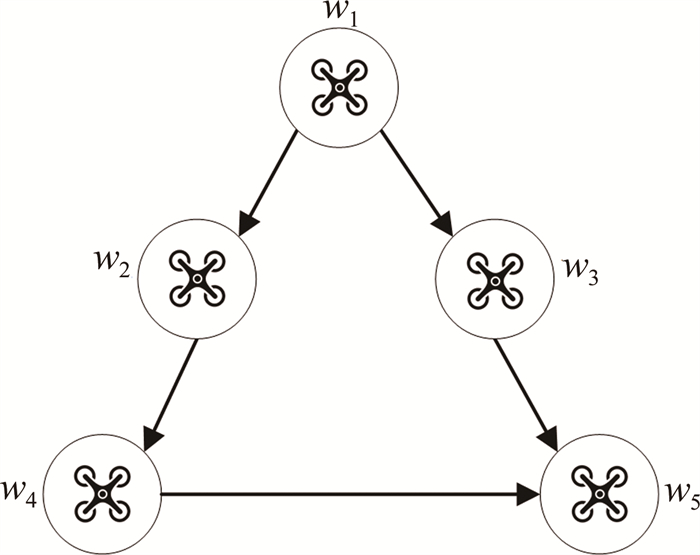
 下载:
下载:
